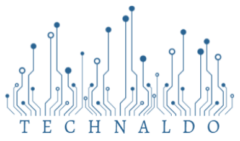The future of all emerging tech is a story about a lot of autonomy. As we live in an extraordinary age of tech innovation, we can see many new technologies coming into our lives. From the emergence of artificial intelligence (AI) to the present and the future of electric cars, current top tech companies and innovative startups are adjusting product categories. Therefore, they are also influencing market factors and creating policy decisions.
Automation- the current implementation of hardware and software features that includes connection data, drives user engagement, information, and analytics with exact and correct movements to provide a dynamic experience. As a developer of autonomous products, here are a few ways that can be the future of tech as the future of autonomy.
In ways and outcomes of the future of tech as the future of autonomy
- AUTOMATION REACHES PHYSICAL SPACES
The software feature of automation is a well-established trend. Each day the solutions of software are relying on automation for years. According to the security magazine, 71% of contributors considered tailgating a serious breach. In retaliation, facial authentication-based biometrics in security are becoming more common with clear value and by giving secure access anywhere in the enterprise, hospitals, Airports, and healthcare facilities. The building, resource management will be advanced by using a combination of sensors, cameras, data aggregators, and AI technologies, and improving security initiatives.
- FUTURE-FOCUSED PRODUCT DEVELOPMENT
youth or you can say the younger generation is true autonomy. They are naturally comfortable with complex technologies. That’s why the current most compelling products are built on top of existing iterations to increase automation technologies. As a result, the only way to build new products is to heavily build on top of existing services while investing a large amount of money to compete in the market. In the truly advanced autonomous tech of the future, brands need to focus on developing better automation technologies and launch newer and better technologies for future generations.
- PRODUCTS AND SOFTWARE FEATURES FADE TO THE BACKGROUND
The best products are those that don’t require any guidance or instructions. They can be used effortlessly while enabling up-to-date hardware and software functionality. Going into the future tech reality of autonomy will require companies to create product and software solutions.
- INTEGRATION IS THE DEFINING QUALITY OF SUCCESSFUL AUTONOMY
Users expect their technologies to communicate, connect, share data, and drive automation across platforms. Future product integrations will contact automation to facilitate real-world outcomes.
To be sure the benefits of autonomy are far-reaching. You can free people from mundane tasks while empowering them to follow things they love to do.
What is autonomous technology?
This is a technology that can function and process tasks without being controlled by a human. Autonomous technology is about enriching automated systems with sensors,( AI) artificial intelligence, and analytical capabilities. For example; Robots, both functional and humanoids, and drones.
Illustrative technological autonomy examples
- Space
- Infrastructure
- Transportation
- Agriculture
- Automation
- Home automation
- Architecture
These are the few illustrative technological autonomy examples that can be a great contribution to our daily lives.
Advantages of autonomy in technology
- Automotive technologies have the potential to accelerate manufacturers’ journey towards industry 4.0.
- They can address the challenge of short product lead times and competitive costing through digitization.
- Visual analytics blended with AI and IoT can automate the supply chain and make it more effective.
- Autonomous technologies can help address safety challenges due to human error through industrial collaborative robots.
- They allow for greater product personalization at scale by making small-batch manufacturing more economical.
- They use AI dynamic reconfigurable and self-correcting systems.
- Robots and drones are used in industries that collect a huge amount of visuals and other sensor data to understand the process.
- They predict the future and adapt to complex environments.
These are the few basic benefits of autonomy in the technology world. But after discussing the advantages, we should know how to evaluate its benefits.
Evaluating the advantages and roadblocks
Before heading towards implementing autonomous technologies, it is important that organizations first evaluate the solutions to know and understand where and how to implement them and how they can be beneficial.
Let’s discuss the basic points that organizations must consider when they implement autonomy in technologies.
- MAKE A STRATEGIC APPROACH
Organizations usually take a very narrow view when it comes to the adoption of autonomous technologies. To get the benefits from these technologies, they need to be viewed through the lens of overall organizational strategy.
- IDENTIFY YOUR UNIQUE CHALLENGES
Each organization has its own unique challenges that acknowledge well to autonomous technologies. These are governed by elements such as organizational readiness, competitive landscape, and nature of operations. It frequently makes sense for an organization to design a unique solution that is tailored to address its needs.
- FIND THE RIGHT PARTNER
Finding the right partner for the implementation of autonomous technologies is highly recommended. Organizations should have a good engineering partner with proven technology and expertise.
In today’s dynamic technology landscape, it is the companies that make the correct and right technology investment that have the margin. Autonomy in technologies can bring great transformation and benefits across industries.
How companies are using tech to give employees more autonomy
Companies that have effectively re-designed their routine, structure, and practices around the drive and judgment of their frontline workers. These types offer important lessons to all companies searching to encourage greater autonomy and horizontal collaboration.
- FOR COORDINATION WITHOUT COORDINATORS
This platform serves as a central hub that connects all the teams and permits each nurse to post problems and questions they have. They support distributive learning and elevate the ideas of the frontline.
- FOR DIRECTION WITHOUT DIRECTORS
To support this level of autonomy, VkusVill relies on its own customized IT platform to connect stores directly. Customers will receive an electronic receipt on which they can rate the time they have chosen on a scale from 1 to 5 with their comments. While many other companies use data to make decisions.
- FOR SUPERVISION WITHOUT A SUPERVISOR
To assure accountability in this system, Haier has created his own IT platform called EMC workbench which brutalizes the process for bidding jobs. It manages the large complex internal market with minimal corporate overhead management.
- FOR GOVERNANCE WITHOUT GOVERNERS
Many people think of blockchains as designed for exchange, the same technology that allows individuals to trustless exchange currency. Blockchains can provide an organization-less solution to the four fundamental problems of organizing- task division, task allocation, reward distribution, and information exchange. The potential ways that blockchain technology might allow human beings to do their best work.
These are the ways that companies are using tech to give employees more autonomy. Automation is the purest form of decentralization.
The impacts of autonomy in our lives
In technologies the autonomies are becoming a common term for describing technical advancements that are prepared to bring computers into the physical world, that move and interact freely with humans and other objects with human direction. This includes vehicles, drones, autonomous smart home devices, autonomous software, and all these advanced technologies that are free from human intervention.
These technologies can be seen in countless use cases across different sectors and businesses like security, transportation, retail, and emergency search and rescue. The following are some of the most prevalent trends in autonomous things:
- Autonomous Vehicles
The prospect of automobiles driving themselves has piqued many people’s interests. Human error is leading the cause of road accidents and they will be eliminated by these cars. Autonomous vehicles are expected to be the first mass development of autonomous technologies.
- Autonomous Robotics
Robotics encompasses smart robots, autonomous mobile robots, delivery robots, personal robots, and robotic appliances are fundamental drivers in autonomous things. Robotics’ growth is predicted in supply chain networks to accelerate as it aids in the reduction of potentially human tasks in warehouses.
- Autonomous Drones
similar to robotics, unmanned aerial vehicles, also known as drones, are a key driver for autonomous things. Drones that can fly autonomously have no limits or restrictions. They are smart and capable enough to give you the purpose you require. It can be flown indoors, outdoors, underground, in the skies, or somewhere else you want. A drone has the unique ability to investigate and report on regions that would otherwise be unreachable.
Types of impacts of autonomy in technologies
- Environmental impact.
- Social impact.
- Economic impact.
The use of these technologies, keeping in mind these types, that impact autonomous technology will boost productivity, profitability, and sales. The concept of Autonomous everything will simplify and create new asset utilization models and processes to make it more efficient and cost-effective.
Conclusion
To be sure the benefits of Autonomy are far-reaching in the future tech industry. The tight fit between hardware and software is the key to unlocking business growth. We can free people from mundane tasks while empowering them. This is a unique moment to embrace growth and change, leveraging the future of tech to create inductive products and services that support business objectives and enhance future growth.
ALSO READ: Best Real life applications of Artificial Intelligence and future warnings.

